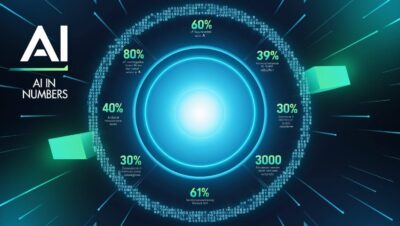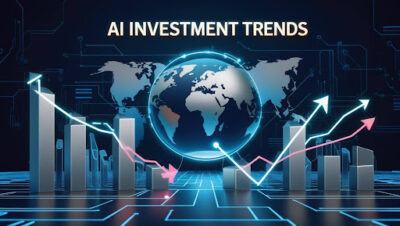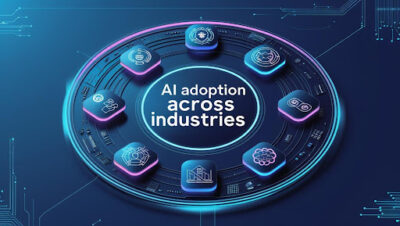Outline for "AI in Numbers: Key Statistics & Trends"
Section | Details |
Introduction | Overview of AI's rapid growth, importance of data-driven insights, and key trends shaping the future. |
Global AI Market Growth | AI market valuation, CAGR, industry adoption, and key players driving AI innovation. |
AI Investment Trends | Venture capital and government funding in AI, biggest AI startups, and investment distribution by region. |
AI Adoption Across Industries | AI applications in healthcare, finance, manufacturing, and retail, along with case studies of AI-driven transformation. |
AI in Workforce & Employment | AI-driven job displacement vs. job creation, reskilling needs, and future workforce trends. |
AI in Consumer Products | AI in smart assistants, self-driving cars, and recommendation engines—how consumers interact with AI daily. |
AI and Data Privacy Concerns | Ethical challenges, data security, and regulatory trends in AI governance. |
AI’s Impact on Productivity | AI’s contribution to automation, efficiency, and cost savings in various sectors. |
Breakthroughs in AI Research | Advancements in deep learning, NLP, and reinforcement learning with real-world applications. |
AI in Startups & Entrepreneurship | The role of AI in scaling startups, notable AI-driven business models, and emerging AI-based ventures. |
AI & the Future of Creativity | AI-generated content, music, and art—how AI is reshaping creativity and content production. |
Challenges in AI Implementation | Technical, ethical, and infrastructural challenges limiting AI’s full potential. |
Future AI Predictions & Trends | Emerging AI trends, quantum AI, and expectations for the next decade. |
Conclusion | Summary of key statistics and takeaways on AI's future. |
Introduction

Artificial Intelligence (AI) has transitioned from a futuristic concept to an essential technology driving innovation across industries. From self-learning algorithms to sophisticated deep learning models, AI is transforming the way businesses operate and consumers interact with technology. The latest statistics reveal a dramatic surge in AI investments, adoption rates, and economic contributions. This article delves into the most significant AI statistics and trends shaping the future of technology.
Global AI Market Growth
The AI market has been experiencing unprecedented growth, with the industry projected to exceed $1.8 trillion by 2030, growing at a CAGR of 35.6%. This exponential expansion is fueled by advancements in machine learning (ML), natural language processing (NLP), and AI-driven automation. Tech giants like Google, Microsoft, and OpenAI are heavily investing in AI research, while startups continue to disrupt traditional industries with AI-powered solutions.
Key Market Insights:
- The AI market was valued at $150 billion in 2023, with rapid acceleration expected.
- North America dominates AI investments, but Asia-Pacific is emerging as a key player.
- AI applications in healthcare, finance, and manufacturing are leading market adoption.
AI Investment Trends

The surge in AI funding underscores the technology's potential to revolutionize multiple sectors. Venture capital firms and governments are pouring billions into AI research and development.
Investment Highlights:
- In 2023 alone, AI startups secured over $100 billion in venture capital funding.
- OpenAI, DeepMind, and Anthropic are among the top-funded AI research companies.
- Governments worldwide, including the US, China, and the EU, have allocated billions for AI initiatives to maintain technological supremacy.
AI Adoption Across Industries

AI is being integrated into diverse industries, driving efficiency, reducing costs, and enhancing decision-making.
Industries Leading AI Adoption:
- Healthcare: AI-powered diagnostics, robotic surgeries, and drug discovery.
- Finance: Algorithmic trading, fraud detection, and AI-driven customer service.
- Manufacturing: Predictive maintenance, quality control, and supply chain optimization.
- Retail: AI recommendation engines, chatbots, and personalized shopping experiences.
Case studies of companies such as Amazon, Tesla, and IBM highlight how AI is reshaping business operations and consumer interactions.
AI in Workforce & Employment

The impact of AI on jobs is a hot topic, with debates on job displacement versus job creation. While AI is automating repetitive tasks, it is also generating new roles requiring advanced digital skills.
Employment Trends:
- By 2025, AI is expected to create 97 million new jobs while displacing 85 million existing roles.
- AI-specialized jobs (data scientists, AI engineers) are among the fastest-growing professions.
- Reskilling initiatives are essential to help workers transition to AI-driven job roles.
AI in Consumer Products
AI is now a part of everyday life, from smart assistants like Siri and Alexa to self-driving technology in Tesla cars.
Consumer AI Statistics:
- Over 1 billion people use AI-powered voice assistants daily.
- AI-driven recommendation engines drive 80% of content consumption on platforms like Netflix and Spotify.
- AI is revolutionizing customer support with automated chatbots and virtual assistants.
AI and Data Privacy Concerns
With AI’s increasing role in decision-making, concerns around data privacy, security, and ethics have grown.
Key Privacy Challenges:
- GDPR, CCPA, and AI-specific regulations are shaping AI governance.
- Deepfake technology and AI bias in decision-making pose ethical risks.
- 70% of consumers worry about how AI handles personal data, highlighting the need for transparent AI systems.
AI’s Impact on Productivity
AI is enhancing workplace productivity by automating tedious tasks and optimizing workflows.
AI Productivity Insights:
- Companies using AI report a 40% increase in efficiency in various operations.
- AI-driven automation is projected to contribute $15.7 trillion to the global economy by 2030.
- AI chatbots save businesses over $8 billion annually in customer service costs.
Breakthroughs in AI Research
Recent advancements in AI research continue to push the boundaries of what is possible.
Notable AI Innovations:
- GPT-4 and beyond: More sophisticated AI language models improving human-like text generation.
- Quantum AI: The next frontier in AI computing, promising exponential processing power.
- AI in medical research: Predicting diseases and accelerating drug discovery.
Future AI Predictions & Trends
AI’s trajectory points toward self-learning systems, ethical AI, and greater human-AI collaboration.
Top AI Trends to Watch:
- AI-powered cybersecurity for detecting and mitigating threats in real time.
- Hyper-personalized AI experiences in marketing and customer engagement.
- AI’s role in climate change mitigation through energy-efficient solutions.
Conclusion
AI is rapidly transforming industries, economies, and everyday life. The statistics and trends discussed in this article provide a glimpse into AI’s vast potential and its inevitable evolution. Businesses that leverage AI effectively will stay ahead, while those slow to adopt may struggle in the digital revolution.
Inbound and Outbound Links:
Inbound: Related AI articles on your website (e.g., AI-powered automation, deep learning trends).
Outbound: Reputable sources (e.g., OpenAI, MIT AI Lab, World Economic Forum AI reports).

